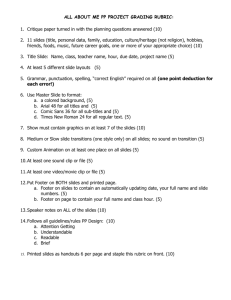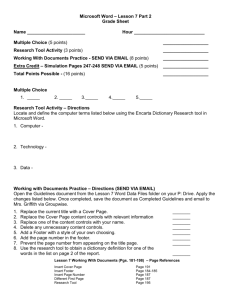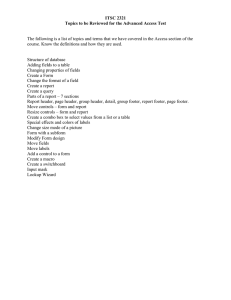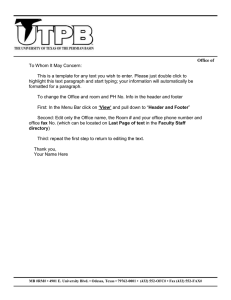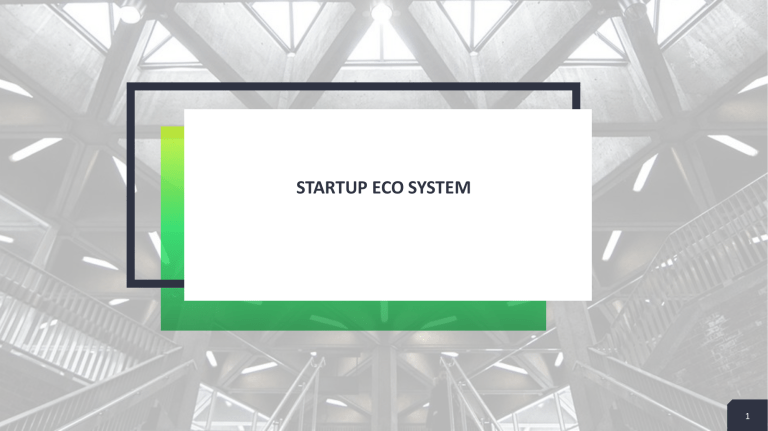
STARTUP ECO SYSTEM 1 KEY ELEMENTS OF STARTUP ECO SYSTEM - Access to great Ideas - Access to Talent - Access to Capital - Access to Customers Add a Footer 2 HOW TO COME UP WITH BUSINESS IDEAS 5 EASY STEPS 1. Business ideas that solve problems 2. Solve things that may become problems 3. Adapt to evolving needs 4. Make people’s lives easier 5. Save people money 3 GETTING FROM BUSINESS IDEA TO BUSINESS MODEL 4 Alex Osterwalder and Yves Pigneur, authors of Business Model generation 5 CUSTOMER SEGMENTS 1. Mass market, this is where we focus on one large group with all these similar needs. 2. A niche market is a market segment identified by a unique set of needs or preferences. 3. A segmented market is one in which you have multiple different groups of customers with different sets of needs and problems 7 VALUE PROPOSITION 1. The promise of what you’ll deliver to your customers 2. The benefits that your customers will reap 3. Why they should choose you over your competition ki 8 CHANNELS Channels are typically direct or indirect and has five phases: awareness, evaluation, purchase, delivery, and after sales. Examples of channel types are your sales force, web sales, stores, wholesalers 9 CUSTOMER RELATIONSHIPS 1 Personal Assistance: through customer care executive interacting with customers at call centres, emails, or retail stores. 2 Dedicated Personal Assistance : this is when you offer individualized personal assistance, that is, you dedicate a specific representative to a particular customer •3 Self-Service •4 Automated Services •Co-Creation: Co-creation refers to inviting stakeholders (usually customers or employees) to participate in a design or problem-solving process to produce a mutually valued outcome. 11 REVENUE STREAMS •Products. Sales of physical or digital products such as a bicycle or e-book. •Consumer Services. Consumer services such as a meal at a restaurant. •Business Services. Business services such as an internet connection. 12 KEY PARTNERSHIPS •Strategic alliances: they happen between companies that are not competitors, in an agreement that benefits both sides. •Co-opetition: happens between competing companies. It helps to divide the risk that both are taking by trying to do something new in the market and can also guarantee some supply that both of them need, to name a few. •Joint-Ventures: the focus here is to develop a new business, due to the birth of a new market or access to a new area, geographically speaking. •Buyer-Supplier Relationship: it is the most common type of partnership and aims to ensure reliable supplies. One side gets a quality supplier and the other, a confirmed and recurring buyer 14 COST STRUCTURE - Cost driven - Value driven 15 COMMON MISTAKES 1. Selecting too many customer segments 2. Value proposition is not innovative or disruptive 3. Channels lack the 5 phases 4. No clear distinction between revenue streams 5. Resources are not categorized as physical, financial, intellectual, human. 6. Cost models are not well thought out Add a Footer 16 Add a Footer 17

